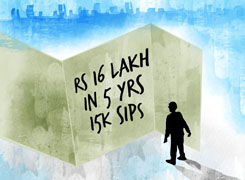I am 37 years old and a govt servant.i just recently started sip in four funds
1.Mirae asset large and midcap fund direct growth. _1k
2.quant large and mid cap fund direct growth_1k
3.kotak equity opportunities fund direct growth_1k
4.icici prudential retirement fund pure equity plan direct growth -5k
Is it good for a term like 10 years?and if i want to invest 5k more then where should i invest for a term of 15 to 20 years.please advice .thank you
Ans: As a government servant at 37, planning for the future is crucial. Starting SIPs in mutual funds is a wise step, but evaluating and refining your strategy can optimize your returns. This analysis will guide you through your current investments and suggest additional avenues for a long-term horizon.
Current SIP Analysis
You've begun SIPs in four mutual funds with a 10-year perspective:
Mirae Asset Large and Midcap Fund
Quant Large and Midcap Fund
Kotak Equity Opportunities Fund
ICICI Prudential Retirement Fund Pure Equity Plan
Your current allocation in these funds is commendable. Let's evaluate the benefits and potential improvements.
1. Mirae Asset Large and Midcap Fund
This fund invests in both large and midcap stocks. It offers growth potential from midcaps and stability from large caps. This balanced approach can yield good returns over the long term.
2. Quant Large and Midcap Fund
Similar to the Mirae Asset Fund, this fund also diversifies between large and midcap stocks. Diversification is a key strategy to mitigate risk while aiming for growth.
3. Kotak Equity Opportunities Fund
This fund focuses on equity opportunities across market caps. It's known for good management and consistent performance. It adds diversity to your portfolio.
4. ICICI Prudential Retirement Fund Pure Equity Plan
This fund is designed for long-term goals like retirement. It invests primarily in equities, which can offer higher returns over an extended period.
Your portfolio currently has a good mix of large-cap stability and mid-cap growth potential. However, since you're considering a long-term investment horizon of 15-20 years, let's explore where you can invest an additional Rs 5,000 per month.
Evaluating Direct Funds vs Regular Funds
You've invested in direct plans, which typically have lower expense ratios. However, regular funds through a Certified Financial Planner (CFP) have their advantages. A CFP provides personalized advice, timely reviews, and adjustments to your portfolio. These services can potentially enhance your investment performance, justifying the slightly higher expense ratios.
Long-term Investment Strategy
For a long-term investment horizon of 15-20 years, consider the following factors:
Diversification: Spread investments across different asset classes and sectors.
Risk Tolerance: Understand your risk appetite and invest accordingly.
Consistent Review: Regularly review and adjust your portfolio based on market conditions and personal goals.
Recommended Investment Avenues
To invest an additional Rs 5,000 per month, here are some funds and strategies to consider:
1. Flexi Cap Funds
Flexi cap funds invest in stocks across market capitalizations. They offer flexibility to shift investments between large, mid, and small caps based on market conditions. This dynamic allocation can capture opportunities across the spectrum and provide robust returns over the long term.
2. Mid Cap Funds
Mid cap funds focus on medium-sized companies with high growth potential. These companies often grow faster than large caps and can offer higher returns. However, they come with higher risk, suitable for a long-term horizon.
3. Sectoral or Thematic Funds
These funds invest in specific sectors like technology, healthcare, or financial services. Investing in a growing sector can yield substantial returns. However, they are riskier and require careful selection and timing. For example, the healthcare sector in India is poised for significant growth due to increasing health awareness and spending.
4. International Funds
Investing in international funds provides exposure to global markets. This diversification can reduce risk associated with the Indian market. It also allows you to capitalize on the growth of developed economies and emerging markets. For instance, a fund investing in US technology stocks can offer high growth potential.
5. Balanced or Hybrid Funds
Balanced funds invest in both equity and debt instruments. They provide growth potential with equity and stability with debt. This mix can be suitable for moderate risk tolerance and long-term investment. These funds can provide a cushion during market volatility, ensuring smoother returns.
6. Multi-Asset Funds
Multi-asset funds diversify across various asset classes, including equity, debt, and gold. This diversification reduces risk and can provide steady returns. Investing in multiple assets helps in balancing the portfolio against market fluctuations.
The Benefits of Actively Managed Funds
While index funds passively track market indices, actively managed funds have fund managers making strategic decisions. Actively managed funds aim to outperform the market, providing higher returns. They adjust portfolios based on market trends, economic conditions, and company performance. This active management justifies the slightly higher expense ratios, as it can potentially lead to better returns than passive funds.
Implementing the Strategy
Based on the analysis, here's a suggested allocation for your additional Rs 5,000 investment:
Flexi Cap Fund: Rs 1,500
Mid Cap Fund: Rs 1,000
Sectoral/Thematic Fund: Rs 1,000
International Fund: Rs 1,000
Multi-Asset Fund: Rs 500
This allocation provides a balanced mix of growth potential and risk mitigation.
Regular Review and Adjustment
Investing is not a one-time activity. Regularly review your portfolio to ensure it aligns with your goals. A Certified Financial Planner can assist in this process, providing insights and adjustments based on market trends and your evolving financial situation.
Final Insights
Investing for the long term requires a strategic approach. Your current SIPs are a good start, and with the additional Rs 5,000 investment, you can further strengthen your portfolio. Diversification across different asset classes and sectors is key to maximizing returns and minimizing risk.
Consider the benefits of regular funds through a Certified Financial Planner. While they have higher expense ratios, the personalized advice and active management can enhance your investment performance.
Focus on a balanced mix of flexi cap, mid cap, sectoral/thematic, international, and multi-asset funds. This diversified approach can capture growth opportunities across markets and sectors, ensuring a robust and resilient portfolio.
Regularly review your investments, adjust based on performance and market conditions, and stay committed to your long-term goals. With careful planning and strategic investments, you can build a substantial corpus for your future needs.
Best Regards,
K. Ramalingam, MBA, CFP
Chief Financial Planner
www.holisticinvestment.in




























